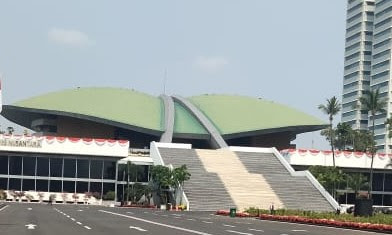Impeachment of the President is a
constitutional mechanism that serves as a form of checks and balances on
executive power within a democratic system of governance. In Indonesia, this
procedure is systematically regulated under the 1945 Constitution of the
Republic of Indonesia (UUD 1945), particularly after the third amendment.
However, unlike some countries that adopt a pure presidential system, the
impeachment mechanism in Indonesia carries unique characteristics and
challenges.
Legal Basis for Presidential
Impeachment in Indonesia
The procedures for impeaching the
President and/or Vice President are governed by:
- Articles 7A and 7B of the 1945 Constitution (UUD
1945)
- Rules of Procedure of the House of Representatives
(DPR) and the People’s Consultative Assembly (MPR)
Article 7A of the 1945
Constitution states:
“The President and/or Vice
President may be dismissed during their term of office by the People’s
Consultative Assembly on the recommendation of the House of Representatives, if
they are proven to have committed a legal violation in the form of treason against
the state, corruption, bribery, other serious criminal offenses, or disgraceful
acts, and/or if they are proven to no longer meet the qualifications as
President and/or Vice President.”
Stages of the Presidential
Impeachment Procedure
- Proposal by the House of Representatives (DPR)
The process begins with the DPR, which must gather strong evidence that the President or Vice President has committed one of the violations specified in Article 7A. This step requires: - Approval by two-thirds of DPR members present
at a plenary session, with a quorum of two-thirds of the total DPR
membership in attendance.
- Request for Opinion from the Constitutional Court
(MK)
Once the proposal is approved, the DPR submits a request to the Constitutional Court (Mahkamah Konstitusi or MK) to assess whether the President has indeed committed the alleged violations. At this stage, the MK acts as an independent judicial body tasked with objectively examining the evidence and arguments. - Decision by the Constitutional Court
If the MK concludes that the President is guilty of serious legal violations or no longer meets the qualifications as head of state, the process moves to the next stage. - Plenary Session of the People’s Consultative
Assembly (MPR)
The MPR then holds a plenary session to decide on the dismissal of the President or Vice President. This decision must be made within 30 days of receiving the MK’s ruling, with at least three-quarters of MPR members in attendance and two-thirds of those present voting in favor of the dismissal.
Criticism and Challenges of
the Impeachment Procedure in Indonesia
- High Political Thresholds
The procedure sets very high political requirements from both the DPR and the MPR. While this acts as a safeguard for government stability, it also makes impeachment difficult—even when there is strong suspicion of misconduct. - Institutional Independence
Although the MK is legally independent, in political practice, concerns persist over potential political interference or conflicts of interest—especially if MK justices have affiliations with certain political factions. - Ambiguity of the Term “Disgraceful Acts”
The Constitution does not clearly define the term “disgraceful acts,” which opens the door to subjective interpretations. This ambiguity can be exploited for political purposes, rather than upholding legal and constitutional integrity. - Historical Context of Impeachment in Indonesia
Since the reform era, no Indonesian President has been successfully impeached through this constitutional process. The case of President Soeharto in 1998 involved a resignation amid public pressure, not a formal impeachment under the Constitution.
Comparison with Other
Countries
|
Country |
Main Mechanism |
Unique/Critical Points |
|
United States |
Vote in the House of
Representatives, trial in Senate |
More political; no role for
Constitutional Court |
|
South Korea |
Involves the Constitutional
Court |
Similar to Indonesia but more
efficient |
|
Philippines |
Through Congress and the
Supreme Court |
More judicial in nature
compared to Indonesia |
Conclusion
The Indonesian presidential
impeachment procedure is a hybrid of legal and political processes,
aimed at balancing governmental stability with leadership accountability.
However, the high political thresholds and ambiguous constitutional
norms risk undermining the oversight function.
To strengthen Indonesia's
democracy, the following steps are recommended:
- Clarify or revise articles with multiple
interpretations in the Constitution.
- Ensure transparency and accountability at
every stage of the impeachment process.
- Promote constitutional literacy among the public,
enabling citizens to become active participants—not merely passive
observers—in the constitutional system.
Meta Description (for SEO):
Learn about the presidential
impeachment process in Indonesia as outlined in the 1945 Constitution. This
article critically and comprehensively explores the legal stages, political
challenges, and international comparisons.
Keywords (for SEO):
Indonesian presidential
impeachment, impeachment procedure, UUD 1945, Constitutional Court,
constitutional law, DPR, MPR, Indonesian political system

Tidak ada komentar:
Posting Komentar
Jika Sobat Ingin Belajar Hukum Yang Baik dan Benar Rajinlah membaca Blog Hukum dan Ketatanegaraan ini dan Tinggalkanlah Komentar Yang Baik.